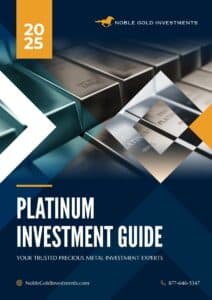In today’s volatile financial markets, maintaining a target asset allocation is crucial for long-term investment success. As market fluctuations cause portfolio values to shift, investors may find their asset mix drifting from its intended balance, potentially exposing them to unintended risks.
Rebalancing helps keep portfolios aligned with their target allocations. Keep reading to learn about various rebalancing techniques and how they can impact portfolio performance.
Understanding Asset Allocation and the Need for Rebalancing
Asset allocation refers to dividing investments among different asset categories, such as stocks, bonds, and cash. The goal is to balance risk and reward according to an investor’s specific goals, risk tolerance, and investment horizon.
Over time, the performance of different asset classes can vary significantly. As some assets outperform others, the portfolio’s allocation can drift from its original targets. This shift can expose the investor to greater market risk than they’re comfortable with, potentially leading to larger losses during market downturns.
Incorporating Precious Metals in a Balanced Portfolio
Precious metals, particularly gold and silver, can play a valuable role in a balanced investment portfolio. These assets often serve as a hedge against market volatility and inflation, potentially providing stability during economic uncertainties.
Historically, gold has shown a low correlation with stocks and bonds, meaning it often moves independently of these traditional assets. During periods of market turbulence or economic stress, gold has frequently maintained or increased its value while other assets declined.
Including a modest allocation to precious metals in a diversified portfolio can potentially reduce overall volatility and improve risk-adjusted returns. The specific allocation will depend on individual investment goals and risk tolerance, but many financial advisors suggest a range of 5-10% of the total portfolio.
Rebalancing Strategies for Portfolios with Precious Metals
When incorporating precious metals into a portfolio, investors need to consider how these assets fit into their overall rebalancing strategy. Gold and silver’s unique characteristics, such as their low correlation with traditional assets, can impact rebalancing decisions.
One approach is to treat precious metals as a separate asset class within the portfolio’s target allocation. For example, an investor might aim for a mix of 55% stocks, 35% bonds, and 10% precious metals. Rebalancing would then involve adjusting all three components to maintain these target percentages.
Another strategy is to consider precious metals as part of a broader “alternative investments” category, which might also include assets like real estate or commodities. This approach can simplify rebalancing by reducing the number of individual components to manage.
When rebalancing a portfolio that includes precious metals, investors should be mindful of the potential tax implications, especially if holding physical gold or silver. In some cases, it may be more tax-efficient to adjust other parts of the portfolio rather than selling precious metals holdings.
Common Rebalancing Methods
Rebalancing methods are strategies investors use to bring their portfolios back in line with their target allocations. Different approaches suit various investor preferences and market conditions.
Calendar Rebalancing
Calendar rebalancing involves adjusting the portfolio at predetermined intervals, such as quarterly, semi-annually, or annually. This method offers simplicity and discipline, as investors know exactly when they need to review and adjust their holdings.
One advantage of calendar rebalancing is that it removes emotion from the decision-making process. Investors stick to a schedule regardless of market conditions, which can help prevent impulsive reactions to short-term market fluctuations.
Threshold Rebalancing
Threshold rebalancing triggers portfolio adjustments when asset allocations deviate from their targets by a predetermined percentage. For example, an investor might choose to rebalance when any asset class moves more than 5% away from its target allocation.
This method responds more dynamically to market movements, potentially capturing opportunities or mitigating risks more quickly than calendar rebalancing. It allows investors to maintain tighter control over their asset mix, especially during periods of high market volatility.
Constant Proportion Portfolio Insurance (CPPI)
Constant Proportion Portfolio Insurance (CPPI) is a dynamic asset allocation strategy that aims to protect a portfolio’s value while allowing for potential growth. This method involves continually adjusting the allocation between risky assets (such as stocks) and safe assets (like bonds or cash) based on market performance.
CPPI works by establishing a “floor” value for the portfolio, below which the investor doesn’t want to fall. The difference between the current portfolio value and this floor is called the “cushion.” As the cushion grows, the allocation to risky assets increases; as it shrinks, the allocation to safe assets increases.
Drift Bands
Drift bands combine elements of calendar and threshold rebalancing. Investors set acceptable ranges (or bands) for each asset class and rebalance when allocations move outside these bands. For example, if the target allocation for stocks is 60% with a 5% drift band, rebalancing would occur if the stock allocation falls below 55% or rises above 65%.
This flexible approach allows for some natural drift in asset allocations while still maintaining overall portfolio balance. It can reduce transaction costs compared to strict threshold rebalancing, as small movements within the bands don’t trigger trades.
Tax-Efficient Rebalancing
Tax-efficient rebalancing strategies are particularly important for taxable investment accounts. These approaches aim to maintain the desired asset allocation while minimizing tax liabilities associated with selling appreciated assets.
One common tax-efficient technique is to use new contributions to rebalance the portfolio. By directing new investments to underweight asset classes, investors can bring their allocations closer to targets without selling existing holdings.
Comparing Rebalancing Methods: Impact on Portfolio Performance
The choice of rebalancing method can have a significant impact on portfolio performance over time. To illustrate this, let’s consider a hypothetical scenario comparing calendar, threshold, and drift band rebalancing over a 10-year period.
Assume a portfolio with a target allocation of 60% stocks and 40% bonds. In our scenario, the stock market experiences periods of both high volatility and steady growth. Calendar rebalancing (annual) maintains the target allocation but may miss opportunities during volatile periods. Threshold rebalancing (5% deviation) responds more quickly to market movements but incurs higher transaction costs. Drift band rebalancing (5% bands) strikes a balance between the two, allowing for some flexibility while still maintaining overall portfolio alignment.
Over the 10-year period, the drift band method slightly outperforms the others in terms of risk-adjusted returns. It captures some of the upside during bull markets while still providing downside protection during volatility. The threshold method shows similar performance but with higher transaction costs, while the calendar method lags slightly due to slower responses to market changes.
It’s important to note that this is a simplified example, and actual results may vary depending on market conditions, individual portfolio characteristics, and investor behavior.
The Importance of Regular Portfolio Review
While rebalancing is a crucial aspect of portfolio management, it’s equally important to regularly review and reassess your overall asset allocation. Financial goals, risk tolerance, and market conditions can change over time, necessitating adjustments to your investment strategy.
Most financial advisors recommend reviewing your portfolio at least annually, or whenever significant life events occur (such as marriage, birth of a child, or approaching retirement). During these reviews, consider whether your current asset allocation still aligns with your goals and risk tolerance, and make adjustments as needed.
Protect Your Wealth With Precious Metals
Maintaining a balanced portfolio through effective rebalancing strategies is crucial for long-term investment success, especially in the face of market volatility. By understanding and implementing appropriate rebalancing techniques, investors can better manage risk and potentially improve their returns over time.
For those looking to further diversify their portfolios and hedge against economic uncertainties, precious metals offer a compelling option. Noble Gold Investments provides various options for incorporating gold, silver, platinum, or palladium into your investment strategy.
Whether you’re interested in physical bars and coins or a tax-deferred precious metals IRA, Noble Gold Investments can help you protect your wealth and secure your financial future. Call us today at (877) 646-5347 to learn more about how precious metals can enhance your retirement portfolio, or click here to create an account today.







